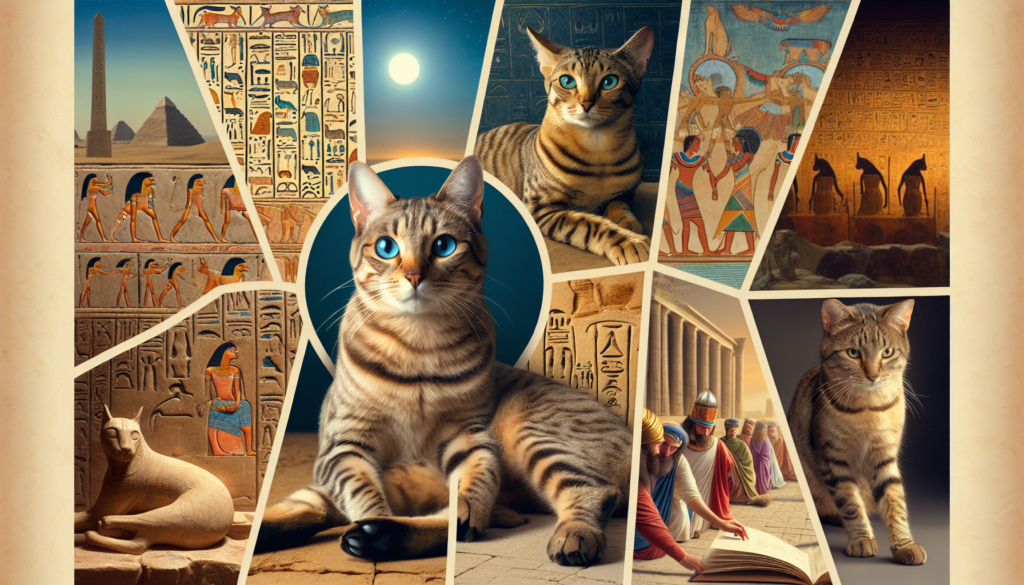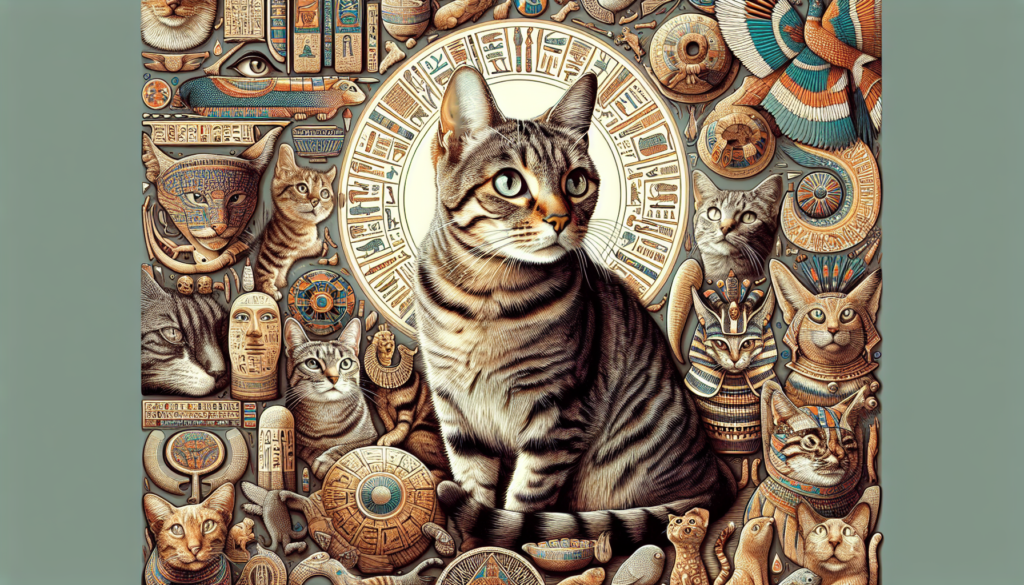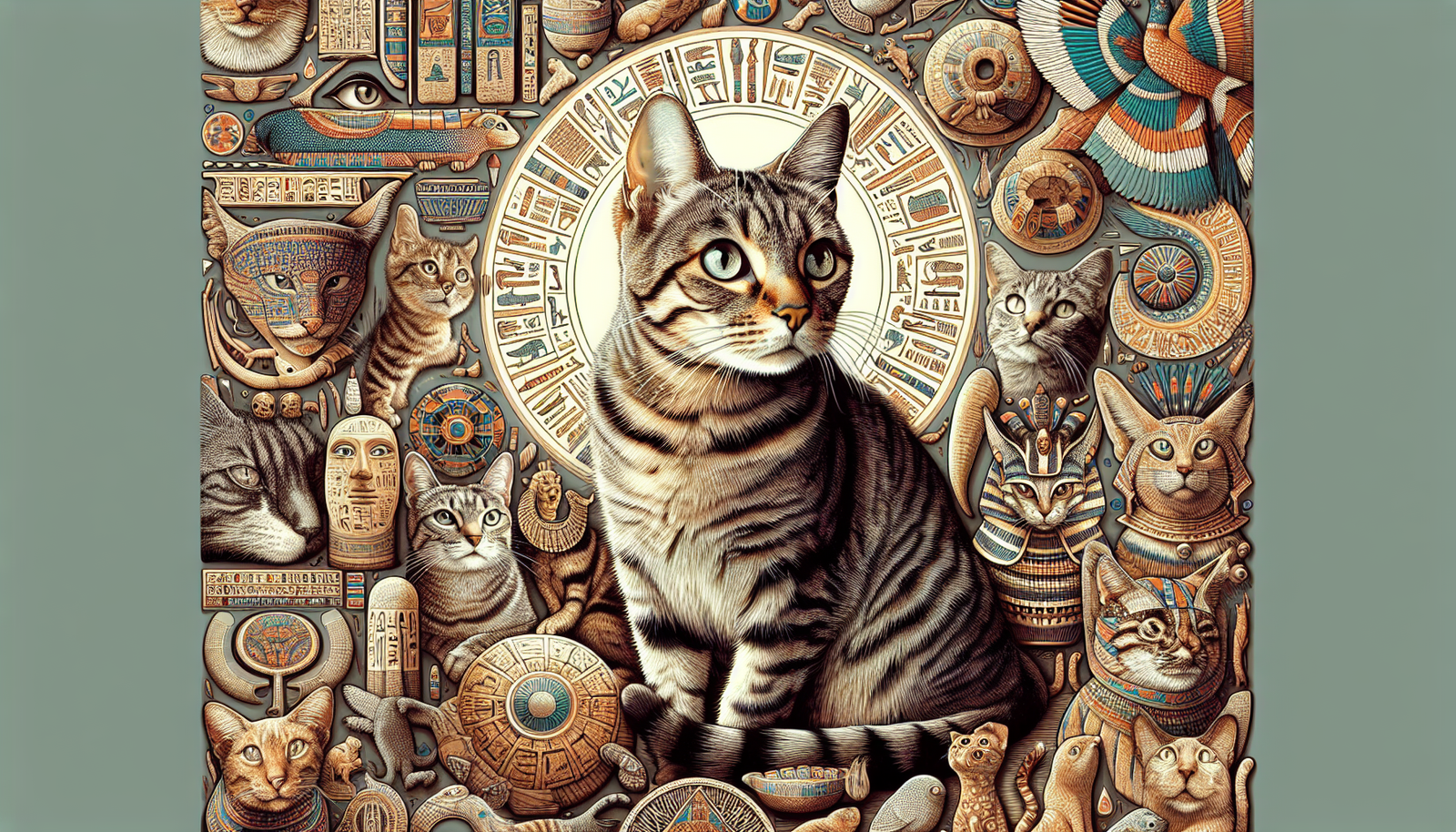Did you know that tabby cats have a rich and fascinating history? These colorful felines have been captivating humans for centuries, with their distinctive coat patterns and playful personalities. From ancient Egypt to modern times, the origins of tabby cats can be traced back to various regions around the world. In this article, we will explore the intriguing journey of these beloved furry companions, discovering how far back their lineage truly goes. Get ready to uncover the captivating history of tabby cats and gain a newfound appreciation for these delightful creatures.
Ancient Origins
Tabby cats have a long and fascinating history that stretches back to ancient times. These charming felines have captured the hearts of humans for centuries, and their origins can be traced to various civilizations around the world.
Egyptian Connection
One of the earliest connections between tabby cats and humans can be found in ancient Egypt. These revered creatures were often depicted in Egyptian art and were believed to possess mystical qualities. In fact, they were considered sacred and were even mummified alongside their human counterparts. The distinctive pattern of the tabby cat’s coat can be seen in many Egyptian murals and sculptures, showcasing their significance in ancient Egyptian culture.
Greek and Roman Influence
The tabby cat’s presence can also be seen in Greek and Roman civilizations. These civilizations held cats, including the tabby variety, in high regard. The ancient Greeks associated cats with attributes such as beauty, agility, and cunning. The Romans, on the other hand, admired cats for their hunting abilities and regarded them as symbols of good fortune. This admiration for tabby cats can still be observed in the depictions found in ancient Greek and Roman art.
Medieval Europe
As civilization progressed into the medieval era, tabby cats continued to play a prominent role in society. In Europe, these cats were associated with witchcraft and superstitions. They were often depicted alongside witches and were believed to be their familiars, aiding them in their mystical practices. However, despite these beliefs, tabby cats were also cherished as companions and protectors against evil spirits during this era.
Distinct Features
Tabby cats are easily recognizable due to their distinctive coat patterns. These patterns can be categorized into various types, each with its own unique characteristics.
Mackerel Tabby
The mackerel tabby pattern is perhaps the most commonly seen among tabby cats. This pattern features narrow, unbroken vertical stripes running along the length of the cat’s body. The striped pattern resembles the markings on a fish, hence the name “mackerel.”
Classic Tabby
The classic tabby pattern is characterized by large, bold, and swirling patterns on the cat’s coat. It is sometimes referred to as the “blotched” or “marbled” pattern. These swirling patterns can be seen on various parts of the cat’s body, including the belly and sides. The classic tabby pattern gives tabby cats a majestic and regal appearance.
Spotted Tabby
As the name suggests, the spotted tabby pattern is defined by spots rather than stripes. These spots can be small or large, and they are scattered across the cat’s coat. The spots can be round or oval in shape, creating a striking and eye-catching coat pattern.
Ticked Tabby
The ticked tabby pattern is quite unique compared to the other tabby patterns. Instead of bold stripes or spots, ticked tabbies have individual hairs with alternating light and dark bands of color. This gives their coat a salt-and-pepper or agouti appearance. The ticked tabby pattern is more commonly seen in certain breeds such as the Abyssinian and Somali.

Genetic Factors
The distinct coat patterns and colors of tabby cats are influenced by various genetic factors. Understanding these factors is essential in unraveling the secrets behind the beautiful tabby cat’s appearance.
Tabby Cat Genetics
The genes responsible for the tabby coat pattern are known as “agouti genes.” These genes determine whether a cat will have a tabby or non-tabby coat. The specific combination and interaction between these genes result in the different tabby patterns we see today.
Agouti Gene
The agouti gene is responsible for producing the various tabby patterns. It controls the distribution of pigment in the cat’s fur, determining where the stripes or spots will appear. The agouti gene is present in all tabby cats and plays a crucial role in creating their unique coat patterns.
Orange Tabby Gene
One of the most well-known traits of tabby cats is their beautiful orange coat. This distinctive coloring is caused by the presence of the “orange tabby gene.” This gene is responsible for producing the reddish-orange pigmentation seen in many tabby cats. It is worth noting that not all orange cats are tabbies, but all orange tabbies possess this gene.
Other Color Variations
While the tabby pattern is most commonly associated with brown fur, tabby cats can also come in a wide range of colors. These include silver, blue, cream, and even rare colors like chocolate and lilac. The combination of tabby patterns and different colors creates a stunning variety among these feline companions.
Tabby Cats Today
Tabby cats continue to be popular and cherished pets in households worldwide. Their unique coat patterns and charming personalities make them a favorite among cat enthusiasts. Let’s explore some of the popular tabby cat breeds, their patterns, and their personalities.
Popular Breeds
Several cat breeds have a particular affinity for the tabby coat pattern. The Maine Coon, known for its large size and friendly nature, often displays striking tabby markings. The British Shorthair, with its round face and plush coat, is often seen in classic tabby patterns. The Bengal, an exotic breed known for its wild appearance, frequently exhibits a spotted tabby pattern.
Tabby Cat Patterns
The abundance of tabby cat patterns ensures that each cat is truly unique. Mackerel, classic, spotted, and ticked tabby cats can all be found in households worldwide, charming their owners with their distinct personalities and stunning appearances.
Tabby Cat Personality
Tabby cats are renowned for their friendly and affectionate nature. They often form strong bonds with their human companions and are known to be loyal and loving. Tabby cats are curious and playful, making them great companions for families and individuals alike. Their adaptable and sociable personalities make them a joy to have as pets.

Tabby Cats in Art and Literature
The allure of tabby cats has transcended time and found its way into various art forms and works of literature. Let’s explore the depictions of tabby cats in art, their presence in mythology, and their roles in literature.
Artistic Representations
Throughout history, tabby cats have been portrayed in numerous paintings and sculptures. Artists have been inspired by their unique patterns and have immortalized them in their artwork. From ancient Egyptian murals to famous Renaissance paintings, tabby cats have left their pawprints in the world of art.
Tabby Cats in Mythology
In the realm of mythology, tabby cats have often been associated with supernatural and mystical qualities. In ancient Egyptian mythology, the goddess Bastet was often depicted with the head of a lioness or a domestic cat, highlighting the significance of cats, including tabbies, in their religious beliefs. These mythical connections further add to the allure and intrigue surrounding tabby cats.
Tabby Cats in Literature
Tabby cats have also made appearances in numerous works of literature. They have been portrayed as companions to fictional characters, adding depth and warmth to their stories. Tabby cats have been featured in classic novels, children’s literature, and even in modern-day novels, captivating readers with their charm and distinctive personalities.
Famous Tabby Cats
Over the years, tabby cats have gained fame and recognition in popular culture. Let’s take a look at some of the most famous tabby cats that have left an indelible mark on our hearts.
Felix the Cat
Felix the Cat, a beloved cartoon character created in the early 1900s, is perhaps one of the most iconic tabby cats in popular culture. With his mischievous nature and magical adventures, Felix has become synonymous with the charm and whimsy of tabby cats.
Garfield
Garfield, the lovable and lazy feline created by cartoonist Jim Davis, is another well-known tabby cat. Known for his insatiable appetite and clever wit, Garfield has captured the hearts of millions around the world through his comic strip and various adaptations in animation and film.
Puss in Boots
The swashbuckling tabby cat known as Puss in Boots has become a beloved character in fairy tales and popular culture. Originally appearing in the classic story of “Puss in Boots,” this charming and cunning cat has since been featured in movies and adaptations, captivating both young and old with his bravery and dashing appearance.
Tabby Cats in Pop Culture
Tabby cats have had a significant presence in pop culture, captivating audiences through various mediums.
Internet Sensations
In the age of the internet, tabby cats have become superstars in their own right. Memes, photos, and videos of tabby cats performing adorable and amusing antics have gone viral, capturing the hearts of online communities. Their playful and endearing qualities have made them favorites among internet users worldwide.
Movies and TV Shows
Tabby cats have also made their mark in the world of movies and television. From animated films featuring tabby cat characters to live-action shows highlighting their unique personalities, these feline companions continue to captivate audiences of all ages.
Tabby Cat Celebrities
Tabby cats have even gained celebrity status through social media platforms. Influential tabby cats on platforms like Instagram and TikTok have amassed large followings, making them popular figures in the online pet community. Through their charismatic personalities and adorable photos, these tabby cats have connected with people from all walks of life.
Conservation Efforts
While tabby cats are often beloved pets, it is essential to recognize the importance of conserving their genetic diversity and protecting endangered tabby cat species.
Endangered Tabby Cat Species
Some tabby cat species face the threat of extinction due to habitat loss and human activities. For example, the Iberian lynx, a species with tabby-like markings, is on the brink of extinction. Conservation efforts are crucial in ensuring the survival of these magnificent creatures and their unique genetic traits.
Preserving Tabby Cat Genetic Diversity
Preserving the genetic diversity within tabby cat populations is vital for their long-term survival. Responsible breeding practices and conservation initiatives help maintain healthy populations and prevent the loss of valuable genetic traits. By understanding the genetic factors that contribute to the tabby coat pattern, researchers and breeders can make informed decisions to ensure the continued existence of these captivating felines.
Misconceptions and Superstitions
Tabby cats, like many other animals, have their fair share of misconceptions and superstitions surrounding them. Let’s explore some of these beliefs often associated with tabby cats.
Tabby Cats and Luck
Tabby cats, particularly those with an “M” marking on their foreheads, have often been associated with good luck. This superstition has its roots in ancient Egyptian beliefs, where cats, including tabbies, were revered and considered bringers of fortune. While these beliefs are steeped in mythology, many people still consider tabby cats to be symbols of luck and positivity.
Tabby Cats as Familiars
Throughout history, tabby cats have been depicted as familiars, or magical companions, of witches. This association led to negative associations with tabby cats, as they were believed to possess supernatural powers and engage in witchcraft. However, it is crucial to recognize that these beliefs are purely mythical and that tabby cats, like any other cat, are simply loving and loyal companions to their human counterparts.
Conclusion
Tabby cats have a rich and storied history that spans across different civilizations and cultures. From ancient Egypt to the modern-day internet sensation, these feline friends have captured the hearts of millions worldwide. Their distinctive coat patterns, charming personalities, and enduring presence in art, literature, and popular culture make tabby cats a beloved and cherished part of our lives. As we continue to marvel at their beauty and enjoy their companionship, let us also remember the importance of preserving their genetic diversity and showing them the love and care they deserve.

